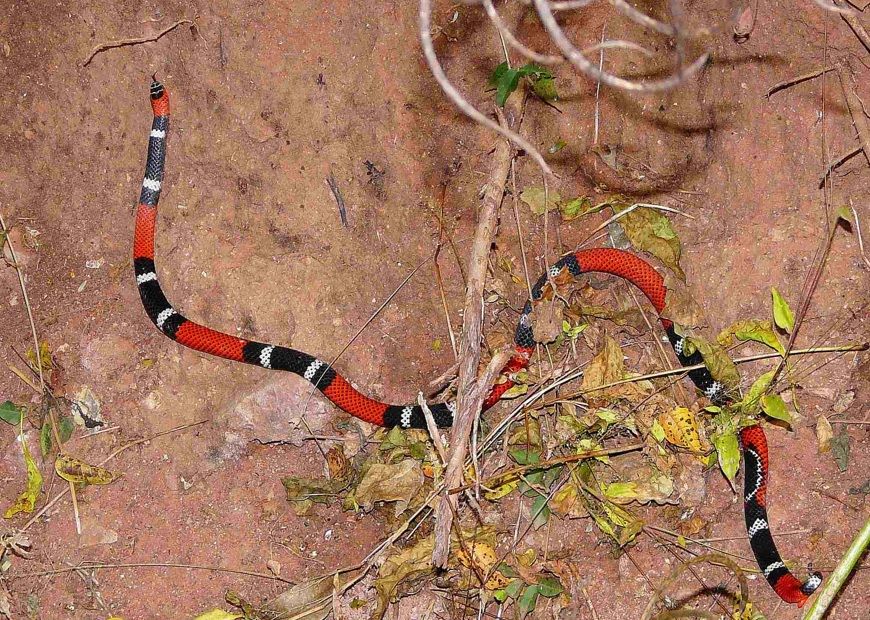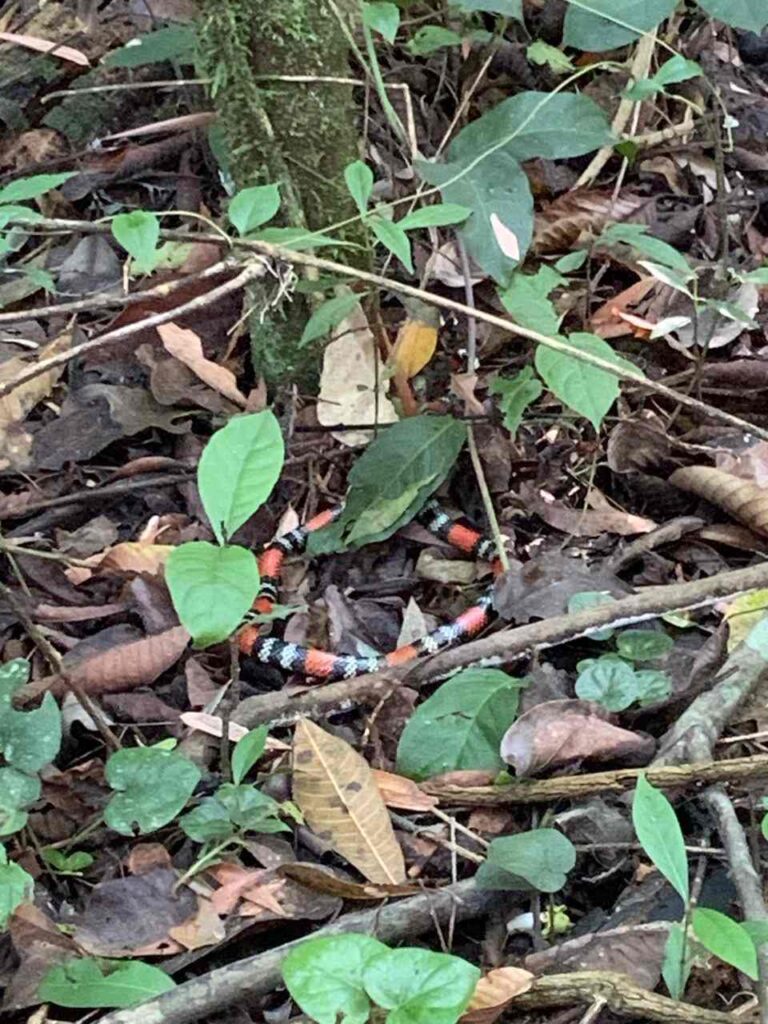
The Argentinian coral snake (Micrurus pyrrhocryptus) is a small but striking reptile, known for its vivid coloration and potent venom. Though rarely seen, this species inhabits parts of northern and central Argentina, especially in Chaco, Formosa, Santiago del Estero, and Salta provinces.
Join the Argentina Herping Expedition 2025 and discover the incredible wildlife of the Atlantic Rain Forest and the Ibera Wetlands.
Its eye-catching bands of red, black, and white serve as a clear warning: this is not a snake to be handled. Despite its reputation, however, the Argentinian coral snake is reclusive and rarely bites humans. It is more a creature of scientific interest and visual wonder than a real threat to people.
Physical Characteristics
The Argentinian coral snake is easy to recognize:
- Size: Usually between 40–70 cm, though some individuals reach up to 1 meter
- Coloration: Alternating bright red, black, and white (or yellowish) rings that encircle the body
- Body shape: Slender and cylindrical, with a short tail
- Head: Rounded and not distinct from the neck
Unlike most other snakes in Argentina, it belongs to the Elapidae family, the same family as cobras and mambas, and possesses neurotoxic venom.
Habitat and Behavior
The Argentinian coral snake prefers:
- Dry forests, savannas, and scrublands
- Areas with loose soil and leaf litter where it can burrow or hide
- Occasionally agricultural fields or areas close to human dwellings
It is nocturnal and fossorial, spending most of its life hidden underground or under logs and stones. It emerges mainly at night or after rain.
Venom and Human Interaction
Despite its toxic potential, the coral snake is shy, non-aggressive, and only bites when handled or accidentally stepped on.
- Its neurotoxic venom affects the nervous system, potentially causing muscle paralysis in serious cases.
- However, due to its small fangs and reluctance to bite, envenomation is extremely rare.
- There are very few documented cases of serious bites in Argentina.
The snake’s aposematic coloring—its vivid warning colors—helps keep both predators and humans away.
“Mimicry” in Nature
The coral snake’s bright bands are imitated by non-venomous snakes (like some species of false coral snakes or colubrids), in a phenomenon known as Batesian mimicry. These mimics gain protection by resembling a dangerous species, even if they’re harmless.
This resemblance, however, makes it difficult to distinguish true coral snakes from their harmless mimics in the wild—one reason why it’s always best not to handle banded snakes, even if you think they’re non-venomous.
Conservation Status
While not currently endangered, the Argentinian coral snake’s population is affected by:
- Habitat destruction, especially due to agriculture
- Persecution by humans due to fear or misidentification
- Loss of natural prey and underground shelter
Educational efforts are essential for promoting tolerance and awareness about this beautiful and misunderstood species.
Wildlife Tours in Argentina
The Argentinian coral snake is a hidden gem of Argentina’s reptile world—small, secretive, and stunningly colored. Its presence is a sign of a healthy ecosystem and serves as a reminder that not all danger in nature comes with a roar or a claw—sometimes, it glides quietly beneath the leaves.
We’re a local tour operator based in Buenos Aires, which offers custom tours in Argentina and Chile. We invite you to contact us, and start planning your next incredible journey to South America!
Get inspired by some of our travel ideas, listed below:
Puma Tracking Tour and Orca Watching
Mision Province & Ibera Wetlands
Orca Whale Watching in Patagonia Argentina
Iguazu Falls, Peninsula Valdes and the Wetlands
Where to see Penguins in Patagonia
Peninsula Valdes: Wildlife Tour
0













